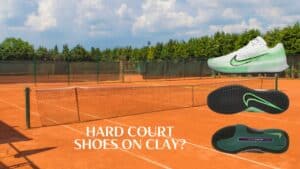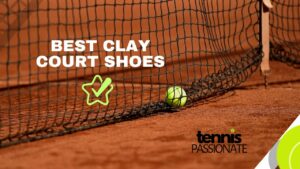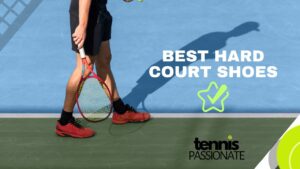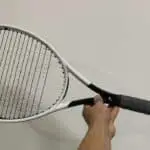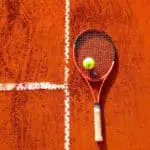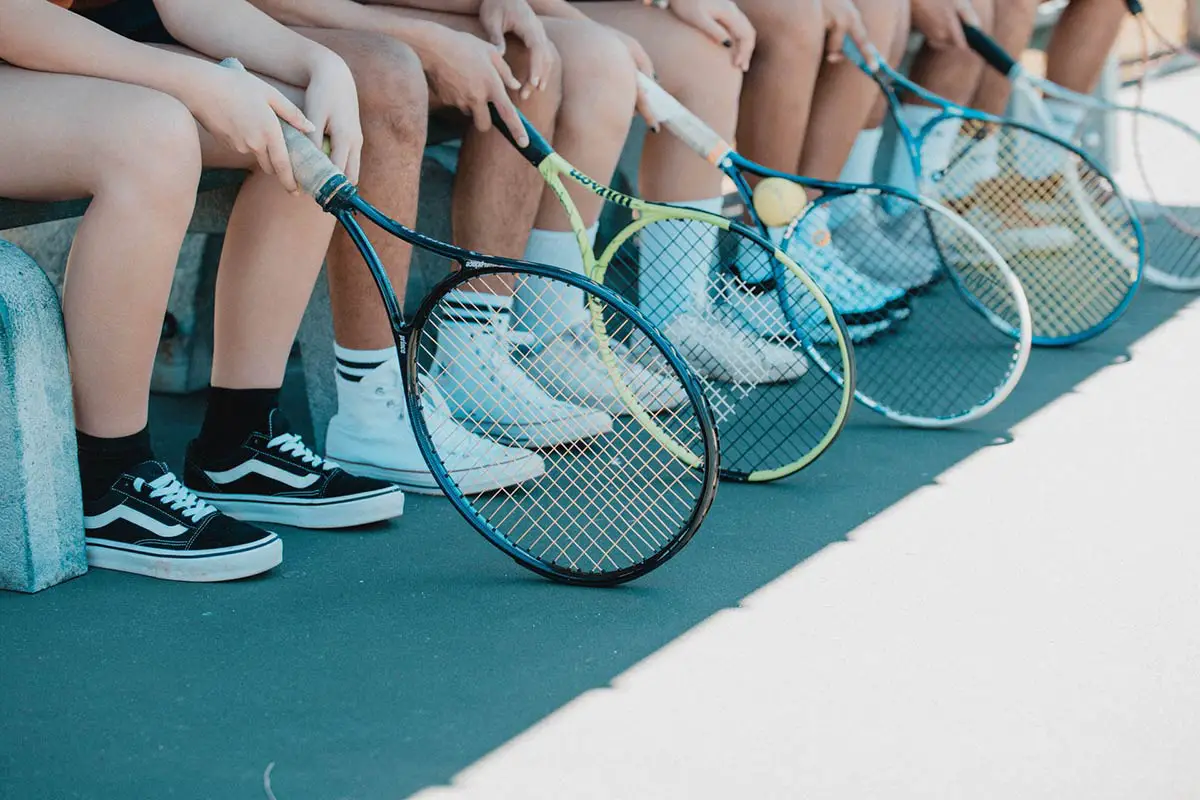
Why You Shouldn’t Wear Running Shoes in Tennis?
When it comes to playing tennis, we always look at what the most successful professionals do. And all of them wear tennis shoes when training or playing matches. There is a reason why they don’t put on any type of shoes other than the ones specifically designed to meet the requirements of a tennis court.
Running shoes don’t provide enough leg support for lateral movement, which happens a lot in tennis in an abrupt manner. This can lead to fatal injuries like twisting an ankle or breaking a toe. Another reason is that running shoes cannot allow you to slide easily on clay or cement courts, whereas tennis manufacturers design specific ones for each type of court.
Components of a Tennis Shoe
These are the main components of a tennis shoe. They aim to provide tennis players with maximum stability, comfort, and support during the match.
I have done the anatomy using the Asics Solution Speed FF 2 Clay Black/Green Men’s Shoes. It is worn on clay courts by a very fast and talented player called Alex ‘the demon’ De Minaur.
Upper view

Side view

Exterior lateral view

Bottom view

Components
- Collar: Gives you more support for the upper heel.
- Cushioning: Absorbs the lateral shocks around the ankle.
- Insole: Loose and removable thin strip placed inside the shoe for cushioning and arch comfort.
- Ventilation holes: keeps the airflow to cool your feet.
- Upper: Upside coverage of the shoe. Often made from synthetic skin or leather.
- Toe guard: Prevents hurting your toes. Useful when you stand on your toes or in sliding.
- Toe box: Reinforced to maintain the toes in place.
- Vamp: Toe area coverage. It is a part of the upper.
- Laces: To adjust the fitting of shoe.
- Eyelets: Holes where laces are placed. They help for tightening the shoes.
- Tongue: Used for better fit.
- Midsole: The biggest supportive cushion placed between the insole and the outsole. Made of foam or gel.
- Shank: Protection of the arch. Created in some models for better grip and flexibility during play.
- Outsole: Sole assuring traction for the player and durability of the shoe. It comes with a tread pattern depending on the type of court.
- Heel counter: Additional support for the heel right outside the back of the midsole.
- Tread patterns: Assure traction to give the player the best stability.
Helpful tips for choosing a tennis shoe:
- Avoid shoes where you are rubbing the ankle bone
- The tongue should be comfortable for your upper leg
- The shoe should have supportive technology like gel or foam in the midsole
- Carefully choose the tread pattern of the outsole based on the court. For maximum traction in clay, choose a herringbone tread pattern. You may ask the retailer for that.
Difference Between Tennis Shoes and Running Shoes
I tried to make a side-by-side comparison to make the difference clear. Remember that we compare the shoes in the context of playing tennis.
| TENNIS SHOES | RUNNING SHOES |
| Slightly elevated heel: good balance is essential. | Very elevated heel: better support for running or hiking in difficult terrain. |
| Not continuous outsole mostly: A 2-point contact is better for the stability and agility of the player. Also, the shank in middle supports the arch of the foot during brutal running. | Continuous outsole: maximum grip and protection of the bottom of your foot. |
| Dense Tread Patterns: Better sliding and breaking in any direction | Fewer tread patterns: Better grip for forwarding motion. |
| Flexible: The shoe is flimsy and supports twisting your foot. | Stiff: the shoe is sturdy and offers resistance when you twist. |
| More durable outsole: Highly resistant to abrasion and friction. | Less durable outsole: in a tennis court, a running shoe will not have a durable outsole, which will damage quicker. |
| Required in tennis clubs: Supervisors will allow you to play. | Not allowed in tennis clubs: Most court supervisors will ask you to change your shoes. Oops! |
Can I Play Tennis with Running Shoes?
There is a reason why they are called running shoes and tennis shoes. Each one is designed to provide a maximum level of performance in its respective sport.
Following the comparison table above, the answer is no you shouldn’t. We highly recommend buying a fresh pair of tennis shoes to play tennis. If you play on a specific surface, get shoes designed for that surface. Walking or jogging shoes might give you fatal injuries. Plus they don’t give the comfort, balance, and support needed in the footwork. And on top of that, you will have to align with the other players, because everyone wears tennis shoes on a court.
Bottom line
Buy yourself a pair of “tennis shoes” to play tennis.


